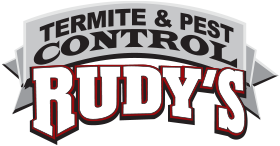Is it snowing in the desert? What are those tiny white things floating about? You may already know we’re experiencing a severe whitefly invasion. Whiteflies are Hemipterans and are closely related to Aphids, Scale and Mealy Bugs. They have functional mouth parts that feed on the underside of the leaf. The eggs are also laid on the leaf’s underside in circular pattern in groups of 30-40. The Whitefly has 6 developmental stages called instars; it’s life cycle can last 30-40 days. Females can mate with its own male offspring, producing eggs up to 400 each of both sexes. Once the eggs hatch in 5-10 days, they can reproduce eggs in 16 days. Whiteflies produce exponentially, so populations increase quickly.
Whiteflies damage the leaf by inserting their stylets (mouth part) to tap into the phloem. The insect introduces a toxic saliva that greatly reduces the plants turgor pressure. Turgor pressure is the pressure that is exerted by a fluid in a cell. This presses up against the cell membrane and is what makes plants tissue rigid. That means plants with heavy populations may looked wilted. When whiteflies are in such large numbers, susceptible plants can be quickly overwhelmed with extensive damage.
Secondary afflictions are also responsible for even more damage. Whiteflies’ excrement is called honey dew; it’s a sweet sticky substance that attract insects such as ants, bees and others. As the branches defoliate from the whitefly infestation, the trunk and branch areas are exposed to the sun. This is commonly known as sun burn or sun scald. The exposed areas will die and sooty mold comes in and starts the decomposition process. There is no effective treatment for sooty mold
Whitefly Treatments:
Whiteflies have a powdery/waxy covering that can effectively provide them with some protection from insecticides. Effective whitefly control utilizes the use of systemic and topical insecticides, applied in a foliar application. Such systemic products can offer 3–6-month residual control. Other treatments can be applied to the root zone with a fertilization product. However, these products are not available to the general public and are responsible for damaging bees.
Any flowering plant attracts bees, especially in the superbloom we have been experiencing for over a year now. Flowering plants must be sprayed with a bee safe product. There are many organic treatments on the internet that are safe for bees. We utilize an organic bee safe product, that has 21-day residual; you will not find another organic certified product that is systemic.
When Will They Be Gone?
We will never get rid of whiteflies. We can only control them to protect our plants from damage by producing healthy plants to ward off the pest, as well the responsible use of pesticides labeled for whitefly control. We’re hoping that as the summer heat comes on, we might see reduced populations of whiteflies.
Sonny Klimowicz
Plant Health Care Specialist


